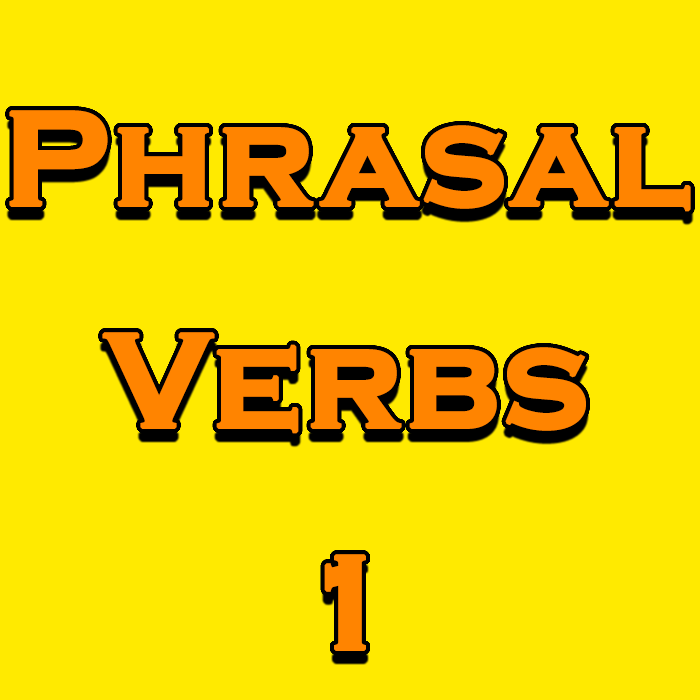Welcome to my website! I am Mahdy Fakkary, an experienced and dedicated IELTS and English tutor. Whether you are preparing for the IELTS exam, looking to improve your English language skills for academic or professional purposes, or simply wanting to enhance your overall English proficiency, you have come to the right place. With my expertise in teaching English as a second language, I am committed to helping you achieve your language goals through personalized lessons, effective strategies, and a supportive learning environment. Join me on this language-learning journey, and let’s unlock your full potential in English together.
Phrasal Verbs
Phrasal verbs are a unique aspect of the English language that can sometimes be confusing for learners. It is extremely important for language learners and IETLS candidates to get familiar with these verbs and be able to use them regularly and carefully. They are a combination of a verb and one or more particles (usually prepositions or adverbs), and their meaning often goes beyond the literal meanings of the individual words. In this blog article, we will explore the concept of phrasal verbs, the difference between phrasal verbs and verbs with prepositions, different types of phrasal verbs, provide a list of phrasal verbs with “look” along with their definitions and examples, and conclude with fill-in-the-blank questions for practice.
Understanding Phrasal Verbs
Phrasal verbs are formed by combining a verb with one or more particles. The particles can be prepositions (e.g., up, down, in, out) or adverbs (e.g., away, off, on, up). The combination of the verb and particle(s) creates a new meaning that is often different from the literal meanings of the individual words. For example, “look up” does not mean to physically look in an upward direction, but rather to search for information.
Difference Between Phrasal Verbs and Verbs with Prepositions
Phrasal verbs are often confused with verbs followed by prepositions, but there is a key difference between the two. In phrasal verbs, the verb and particle(s) are considered as a single unit, and the meaning is often idiomatic, meaning it cannot be deduced from the individual words. On the other hand, verbs followed by prepositions are separate words, and the meaning can often be understood from the literal meanings of the verb and preposition. For example, “look after” is a phrasal verb that means to take care of, whereas “look at” is a verb followed by a preposition where “look” means to direct one’s gaze and “at” indicates the direction of the gaze.
Types of Phrasal Verbs
Phrasal verbs can be categorized into different types based on their meanings and usage. Some common types of phrasal verbs include:
- Intransitive Phrasal Verbs: These phrasal verbs do not require an object and do not transfer the action to another object. For example: “She ran away from the scene.” (The phrasal verb “ran away” does not have an object.)
- Transitive Phrasal Verbs: These phrasal verbs require an object and transfer the action to another object. For example: “He put on his jacket.” (The phrasal verb “put on” has the object “his jacket”.)
- Separable Phrasal Verbs: These phrasal verbs allow the object to be placed between the verb and the particle or after the particle. For example: “She turned off the lights” or “She turned the lights off.”
- Inseparable Phrasal Verbs: These phrasal verbs do not allow the object to be placed between the verb and the particle. For example: “He always looks after his sister” (not “He always looks his sister after”).
Phrasal Verbs with “Look”
The verb “look” is commonly used in phrasal verbs, and here are some examples with their definitions and examples:
- Look up: to search for information or consult a reference
- Example: “I need to look up the meaning of this word in the dictionary.”
- Look after: to take care of or be responsible for
- Example: “My older sister looks after our younger siblings when our parents are not home.”
- Look out: to be vigilant or cautious
- Example: “Look out! There’s a car coming towards you!”
- Look over: to examine or review something
- Example: “Before submitting the report, I need to look it over for any errors.”
- Look forward to: to anticipate or be excited about something in the future
- Example: “I am looking forward to my upcoming vacation to the beach.”
Fill-in-the-Blank Questions
Now, let’s practice using the phrasal verbs introduced in this blog article. Complete the following fill-in-the-blank questions with the correct phrasal verb:
- Can you please __________ the documents and make sure they are in order?
- I’m really __________ meeting my favorite actor at the movie premiere.
- Remember to always __________ your safety while crossing the road.
- He promised to __________ his friend’s cat while they were away on vacation.
- I need to __________ the directions to the new restaurant before heading out.
Conclusion
Phrasal verbs are an essential aspect of English language proficiency, and understanding their types, usage, and examples can greatly enhance your language skills. By familiarizing yourself with phrasal verbs, such as the ones with “look” as discussed in this article, you can expand your vocabulary and communicate more effectively in various situations. Practice using phrasal verbs in context through fill-in-the-blank questions or other exercises to reinforce your understanding. Keep learning and mastering the nuances of phrasal verbs to become a more confident English speaker!







